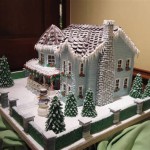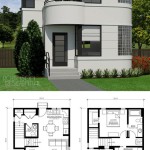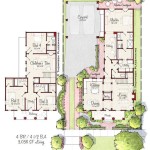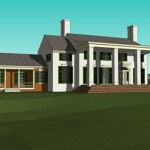Floor Plans With Drive Under Garage: Maximizing Space and Convenience
The integration of a drive-under garage into a home's floor plan presents a unique approach to maximizing space, particularly on challenging terrains or in areas with limited lot sizes. This architectural design, where the garage is located partially or entirely beneath the main living areas, offers distinct advantages and considerations that merit careful evaluation.
Drive-under garages are often found in homes built on slopes, hillsides, or in areas prone to flooding. They provide a practical solution for accommodating vehicles while preserving valuable living space on the upper levels. The design effectively utilizes the natural topography to create both functional parking and accessible living areas.
This article will explore the key considerations, benefits, and potential challenges associated with floor plans featuring drive-under garages, providing a comprehensive overview for homeowners and prospective buyers.
Space Optimization and Terrain Accommodation
One of the primary benefits of a drive-under garage is its ability to optimize space, especially on sloped or uneven lots. Traditional garages often require extensive grading and excavation to create a level surface, which can be costly and disruptive. A drive-under garage, on the other hand, leverages the existing terrain, minimizing the need for extensive site preparation. This can translate to significant cost savings and reduced environmental impact.
By positioning the garage beneath the living areas, the footprint of the house can be reduced. This is particularly advantageous in urban areas or locations where land is at a premium. The design allows for a more compact and efficient use of the available space, freeing up valuable area for landscaping, outdoor living areas, or even a larger interior footprint on the upper levels.
Furthermore, drive-under garages can be discreetly integrated into the overall design of the home. In many cases, the garage entrance is visually minimized, blending seamlessly with the surrounding landscape. This can enhance the curb appeal of the property and preserve the aesthetic integrity of the neighborhood.
The practical implications of a drive-under garage extend beyond mere space optimization. In areas with frequent snowfall or icy conditions, a drive-under garage provides a sheltered entry point, reducing the risk of slips and falls. It also protects vehicles from the elements, prolonging their lifespan and minimizing the need for snow removal or ice scraping.
The design offers a degree of security, as vehicles are stored within the confines of the home's foundation. This deters theft and vandalism, providing peace of mind for homeowners. The enclosed garage also offers a secure and convenient storage space for tools, equipment, and other items that might otherwise clutter the living areas.
Design Considerations and Structural Implications
The design and construction of a drive-under garage require careful planning and attention to detail. The structural integrity of the home is paramount, as the garage effectively forms the foundation for the upper levels. This necessitates a robust and well-engineered foundation system that can withstand the weight of the building and resist the lateral forces of the surrounding soil.
Proper drainage is another critical consideration. Effective drainage systems are essential to prevent water from accumulating in the garage and potentially damaging the foundation. This may involve the installation of French drains, sump pumps, and other drainage solutions to redirect water away from the building.
Ventilation is also crucial to prevent the buildup of harmful gases, such as carbon monoxide, from vehicle exhaust. Adequate ventilation systems should be incorporated into the garage design to ensure proper air circulation and maintain a safe and healthy environment. This may involve the installation of exhaust fans, vents, and other ventilation devices to remove pollutants from the air.
The accessibility of the garage from the upper levels is a key design consideration. Internal staircases or elevators may be necessary to provide convenient access to the garage, especially for individuals with mobility limitations. The placement and design of these access points should be carefully planned to ensure ease of use and minimize disruption to the living areas.
The aesthetic integration of the garage into the overall design of the home is also important. The exterior of the garage should complement the architectural style of the house and blend seamlessly with the surrounding landscape. This may involve the use of matching materials, colors, and architectural details to create a cohesive and visually appealing design.
Building codes and regulations may impose specific requirements for drive-under garages, such as minimum ceiling heights, fire resistance ratings, and ventilation standards. It is essential to consult with local building officials and architects to ensure that the design complies with all applicable regulations. Failure to comply with these regulations can result in costly delays and revisions.
Potential Challenges and Mitigation Strategies
While drive-under garages offer numerous advantages, they also present several potential challenges that homeowners should be aware of. One common challenge is the potential for moisture intrusion. Because the garage is located below grade, it is susceptible to moisture seepage from the surrounding soil.
To mitigate this risk, proper waterproofing techniques should be employed during construction. This may involve the application of waterproofing membranes to the exterior walls of the garage, the installation of vapor barriers, and the use of moisture-resistant materials. The effectiveness of these measures should be regularly inspected to ensure that they are functioning properly.
Another potential challenge is the risk of flooding. In areas with heavy rainfall or poor drainage, drive-under garages can be vulnerable to flooding. To minimize this risk, effective drainage systems should be installed to redirect water away from the garage. Sump pumps can also be used to remove any water that does accumulate in the garage.
The potential for gas leaks and carbon monoxide poisoning is another concern. Vehicles emit harmful gases, such as carbon monoxide, which can be deadly if inhaled. To mitigate this risk, proper ventilation systems should be installed to remove pollutants from the air. Carbon monoxide detectors should also be installed in the garage and adjacent living areas to provide early warning of dangerous gas levels.
Noise transmission from the garage to the upper levels can also be a problem. The sound of vehicles starting, doors opening, and other garage activities can be disruptive to the living areas above. To minimize noise transmission, soundproofing materials can be used in the construction of the garage. This may involve the installation of insulation, sound-dampening panels, and other noise-reducing measures.
Finally, the resale value of a home with a drive-under garage may be affected by the perceived challenges associated with this design. Some buyers may view drive-under garages as being less desirable than traditional garages due to concerns about moisture, flooding, or accessibility. To address these concerns, it is important to highlight the advantages of the design, such as space optimization, terrain accommodation, and security. Providing documentation of proper waterproofing, drainage, and ventilation systems can also help to reassure potential buyers.
In conclusion, floor plans with drive-under garages offer a practical and efficient solution for maximizing space and accommodating vehicles on challenging terrains. By carefully considering the design implications, potential challenges, and mitigation strategies, homeowners can create a functional and aesthetically pleasing living space that meets their specific needs.

Simple Country Home Plan With Drive Under Garage

Contemporary House Plan For Narrow Lot With Drive Under Garage

Plan 62801dj Exclusive Modern Home With Courtyard And Drive Under Garage

Modern 3 Bed House Plan With Drive Under Garage And Upstairs Laundry Room 23920jd Architectural Designs Plans

Drive Under House Plans

Drive Under House Plans Small Modern Raised Hillside

Drive Under House Plans With Basement Garage The Designers

Drive Under House Plans Small Modern Raised Hillside

Photo Gallery Of Plan 81264

Beautiful Multi Generational Farm House Style Plan 1104 Gardenia








